Live! Session #9 – ft. Mr Wilson Neo (Part 2 – Snakeskin Care)
January 5, 2021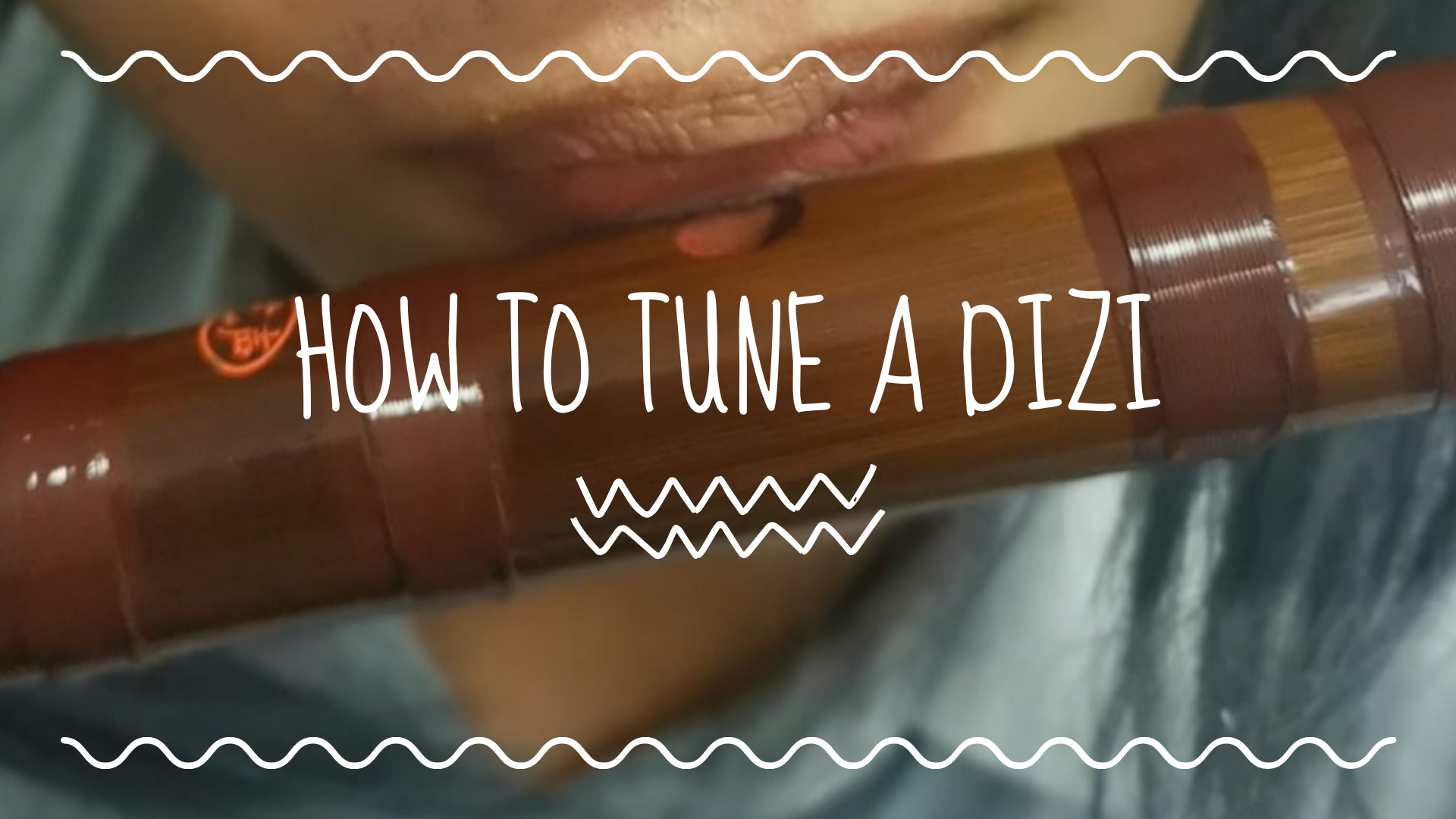
Tuning Your Dizi
December 27, 2021Erhu Buying Guide (Price)
Buying an erhu can be a daunting task if you do not know much about the instrument. Heck, it can also be daunting even if you have been playing for quite a while.
There are so many variables on the erhu that affect the erhu in various ways and the price.
There is the wood, the workmanship, the snakeskin, the shape of the resonator and where the maker hails from.
In this series of blogposts, I will try to provide you with as much and digestible information, to help you decide on which erhu to choose, whether you are a beginner, intermediate or advanced player.
Information given are to the best of our knowledge and experience. Opinions if subjective will be indicated.
Erhu references, of course, will be made to the erhus that we sell at our erhu online store.
So where do you start?
The easiest way, though not necessarily the best way for someone to decide, is based on cost/price.
First things first, how much does an erhu cost anyway?
The cheapest Erhu out there in the market can be as low as US$50 and an Indian small leaf sandalwood made by a reputable maker can cost more than US$10,000.
Why is there such a big difference in the price?
There are 3 factors that affect the price of the Erhu: wood, python skin, maker.
1) Wood Used:
Let’s talk about wood used first.
There are various types of woods used to make Erhus.
The most common would be Rosewood and the rarest and most valuable would be Indian small leaf sandalwood. In addition to those woods, there are Ebony, Violet Sandalwood, Black sandalwood and other uncommon ones.
For each kind of wood, they also vary in quality, where it hails from and also the age of the wood. Usually the older the the wood the better.
Take rosewoods as an example. The cheapest rosewood used is young rosewood and they often come with a bright hue. Whereas the older, or aged, rosewoods, we called them aged rosewoods, can range from US$600 to US$1500 and have a darker hue than young rosewood.
Moving up in price would be the “Ming Qing” rosewoods. The wood was repurposed from furniture made in the “Ming Qing” dynasty and the erhus may cost starting from US$2000.
Rosewoods generally have a sweet and bright tone. The ebony and black sandalwood is less sweet and more mellower. The violet sandalwood will give a richer and articulate tone.
For beginners, Rosewood is a safe choice for starting out if you do not have too much of a tone preference.
We observed that some beginners are more attracted to mellow and dark tones of an Erhu. In this case they can consider Ebony wood or Black sandalwood.
For more intermediate players you should be looking at Aged Rosewood or Violet Sandalwood and above.
2) Python Skin
You may have noticed that part of the resonator / soundbox of the erhu is made from python skin. The skin of the python is specifically selected because it has great elasticity (think python swallowing a cow). Nothing even comes close.
But not all python skins are created equal. Different python skins have different elasticity, even if the skin is from a different portion of the same python.
The better the skin, the higher the price.
When the erhu maker is making an Erhu with a good piece of wood, he will definitely want to pair it with a good piece of snakeskin, so as not to ‘waste’ a good piece of wood, or rather make a great instrument.
A good piece of wood with a good piece of snakeskin would then produce an Erhu with a better tone quality, but also fetch a higher price tag.
There is also the issue of farmed python versus wild python. Wild pythons have the freedom to move around much more compared to the former. Hence, their skin has much better elasticity than farmed pythons, and they are very well sought after.
However, nowadays all erhus are made with skin of farmed pythons. The secret environmentalist in you might be glad to know that the farmed pythons were not specifically farmed for only erhus. Instead, python skins used for erhus are only the byproducts of what they were actually farmed for.
For beginners, it is important that they do not buy very cheap Erhus that comes with poor quality snakeskin. These snakeskin does not look like python skin and a significant portion of the scales is peeling off. The tone produced by these kind of Erhus are scratchy and harsh.
The python skin needs to look minimally like this:
This is an example of a good piece of python skin:
Click here for another blog post where we talk more about what to look out for in snakeskins on the Erhu.
For beginners you need to avoid buying a cheap Erhu with bad snakeskin. Scales that are peeling at the sides or overly big are things to red flags you should be looking out for.
For advanced players, you should make sure the snakeskin is not too thin or loose. You would want it to be able to play it hard without the sound breaking.
3) Makers
There are more than a thousand different Erhu makers in China.
They have apprenticed under various masters and possess varying levels of expertise in Erhu craftsmanship.
Just like chefs, some chefs are better at cooking than others.
In the hands of a skilful and experienced erhu maker, the Erhu would have a better resulting tone using the same type of wood and piece of snakeskin.
Hence, a reputable maker with a good name and track record would demand a premium for their erhus, sort of like brands.
There are 3 distinct type of Erhu tones, namely Suzhou, Shanghai and Beijing.
The Suzhou tone is warm and sweet. The Beijing tone is bold and bright while the Shanghai tone is somewhere in the middle.
Click here to read more about the different tones of Erhu.
For a beginner, the maker might not matter much as long as the Erhu plays well enough for them to start learning.
For advanced players who are more aware of the tone that they want, they can take note of the different Erhu characteristics of different makers.
——————————-
All in all, the price of an erhu is determined by the type of wood used, the quality of snakeskin and who makes it.
Before we go into Erhus by price points, here are 2 additional factors to be aware of when buying an Erhu.
4) Playability
This refers to the sensitivity and responsiveness of the instrument to produce a clean tone.
An instrument with good playability requires less effort to produce a decent sound.
An instrument that is more demanding, or less playability, requires a lot of physical effort and specific adjustments to produce a decent sound.
This is quite an important factor for me. I am more of a leisure player and would like to have an instrument that I can easily play for simple pieces.
For beginner it is very important to get an Erhu that is very responsive so that you get less wolf tones and squeaky sounds. A person gives up after a while if all he or she produces is noise.
For an advanced player, responsiveness is also important. But if the snakeskin is thicker and tighter, it might not be as responsive initially till it seasons. So it is still all right if the Erhu is new but not super responsive.
5) Workmanship
This refers to how well / fine the instrument is made.
For Chinese instruments, this is not something you can be picky about. Sad to say, Chinese instruments’ workmanship still has a long way to go if you compare it with our Western counterparts.
It is common to see scratches, a little lopsided baseplate, rough edges, pegs that do not fit perfectly etc. Even from reputable makers.
On the other hand, it can be seen as the makers being more interested in the sound of the instrument than anything else.
For beginners and advanced players, you should be more concerned about the playability and the sound of the Erhu.
If you want to buy something to admire rather than play, you can buy an Erhu like you are buying a piece of furniture, but it would be difficult to find something that is perfect.
But having said that, I find the workmanship of Shanghai Dunhuang Erhus pretty good and consistent.
Which Erhu should you buy in this case?
Tier F: As cheap as you can find
Tier C: S$190 – S$390
Tier B: S$490 – S$720
Tier A: S$720 – $1500
Tier S: S$2000 and above
Tier F: As Cheap as You Can Find
For a beginner or someone who is just curious to try playing the erhu for the first time, there is always this urge to buy the cheapest Erhu they can find.
There are a lot of places on the internet selling US$50 Erhus but I would avoid them even if they were offered for free.
These erhus are usually made with poor materials and likely produces scratchy and harsh tones that no amount of accessory upgrades will ever help.
If you are someone wanting to try the Erhu for a first time, not knowing where you would go, I understand the reluctance to invest a significant amount of money in an unfamiliar instrument for a first-time Erhu player.
But you also would not want to buy something that sounds bad and neither do you want to be in the position where you sound bad and doubt if it’s you or the instrument.
Tier C: The Bare Minimum (S$190 – $390)
Erhus in this category represents the minimum quality you need to start with on your Erhu journey.
The Erhus here though cheap, sounds decent to good and is guaranteed to work.
The ones on the higher end of the scale can pack a punch also.
1. EASON STARTER ROSEWOOD ERHU BY LIU JI FENG

The cheapest Erhu that we have is young rosewood Erhu by a maker in Tianjin called Liu Ji Feng (LJF).
This Erhu feels lightweight but sounds and plays decently.
This is the least you need to know that you can always practice more to sound good, rather than it being the instrument that sounds bad.
2. STARTER ROSEWOOD ERHU BY SHANGHAI DUNHUANG
We also have our best selling Erhu here – the Shanghai Rosewood Erhu by Shanghai Dunhuang.
This was our most popular model before the young rosewood Erhu by LJF came along.
It has a pleasant, sweet and warm tone and has good playability.
Compared to the young rosewood erhu, the tone has slightly more body and richness.
The workmanship is also pretty good.
3. EASON POPULAR BLACK ROSEWOOD ERHU BY LIU JI FENG
LJF also has a better Erhu model that is made from black rosewood.
This Erhu is very responsive and easy to play.
The tone, albeit slightly thin, is mellow and warm.
Definitely better than its predecessor.
4. POPULAR RED SANDALWOOD ERHU BY SHANGHAI DUNHUANG
The last in this category is another by Shanghai Dunhuang.
It is made from red sandalwood, one of the cheapest sandalwood used to make starter Erhus.
In the looks department, it looks very much like the rosewood version.
The tone however is richer and more articulate than the rosewood version.
Tier A: All That You Need (S$900 – $1600)
In this category you have people who are serious about the instrument.
You can be a beginner but you love the instrument so much and are determined to mount up for a serious challenge. For that, you will need to be equipped with a high quality weapon and the Erhus in this category are what you would be looking at.
Either that or you are an intermediate player who is looking for an upgrade to something that is good enough for recordings and solo performance
The Erhus in Tier A are mainly made from Violet Sandalwood, Black Sandalwood and Aged Rosewood
Not only are they richer tone, they have an added complexity to the tone.
One of these should last you for a long time, till you decide that you want another different kind of tone.
1. SHANGHAI BLACK SANDALWOOD ERHU BY HU HAN ROU
Hu Han Rou (HHR) is one great Shanghai Erhu maker and this is her entry level Erhu made from black sandalwood.
Her Erhus are best described, as part of her name suggests (柔, róu, meaning gentle), feminine and cultured, as opposed to brash and loud.
Her Erhus also have this lush and grainy tone undertone.
This particular Erhu has all of those qualities in addition to sounding warm and mellow.
2. PROFESSIONAL PREMIUM AGED ROSEWOOD ERHU BY YU KAI MING
A better quality aged rosewood Erhu by Yu Kai Ming compared to the one in Tier B.
Sweet and resonant with a stronger and more robust tone.
As with all Yu Kai Ming Erhus, this very responsive and easy to play on.
3. CONCERT AGED ROSEWOOD ERHU BY WAN QI XING
Wan Qi Xing (WQX) Erhus, among all erhus, have been around for the longest time.
We grew up playing his aged rosewoods a lot so it is quite a nostalgic name for us.
Production has been taken over by his sons and employed workers (because he’s pretty old), but the quality is still there.
It is articulate, bright and warm, with the distinct sweet Suzhou tone.
3. CONCERT AGED ROSEWOOD ERHU BY SHANGHAI DUNHUANG
This is an aged rosewood erhu from Shanghai Dunhuang.
Like the Ivory Coast sandalwood Erhu from Shanghai Erhu, this erhu is clean and rich with an added sweetness to the tone.
It is also very responsive and easy to play on.
4. CONCERT PREMIUM AGED ROSEWOOD ERHU BY YU KAI MING
This is made of better quality aged rosewood and snakeskin compared to his other aged rosewood Erhu.
It is sweet, articulate, not as brash, and has a relatively more rounded tone.
The tone sounds deeper and stronger as well.
5. CONCERT PREMIUM AGED ROSEWOOD ERHU BY HU HAN ROU
The best selling Erhu from Hu Han Rou.
Using quality aged rosewood, the tone is sweet, articulate, luscious and well rounded.
Along with that signature feminine voice.
Tier S: As Good as it Gets (S$2000 and above)
The Erhus in the Tier S are a cut above the rest.
They are louder, more articulate, richer and their tones have more underlying complexities.
They also have a high volume threshold, which means you can play very loud without the sound breaking.
They are made using the best of materials and the snakeskin is usually thicker and tighter.
These Erhus need more time to run-in and have the potential to sound so much better than when they are new.
You can be a beginner who want a really good instrument, but you will need some hard playing to get the instrument to its full potential.
Or you can be an intermediate to advanced player looking to upgrade your instrument to something that you will not need to upgrade again in the foreseeable future.
Seasoned violin or cello players can consider these, since your ears are conditioned to fine instruments.
1. CONCERT VIOLET SANDALWOOD ERHU BY HU HAN ROU

This is an Erhu by Shanghai maker Hu Han Rou.
Its tone is sweet, rich, clean and very well rounded.
Loud but not brash, penetrative yet not jarring.
2. EXQUISITE MING QING AGED ROSEWOOD “MOUNTAINS AND RIVERS” ERHU BY XU CHUN FENG

This is a Suzhou Erhu by maker Xu Chun Feng (XCF).
Made with Ming QIng aged rosewood, the tone is very clean and one of the few Erhus with really clean and strong high registers.
Has that typical warm and sweet Suzhou tone.
Also check out its equivalent with a headstock depicting lily ponds here.
3. EXQUISITE MING QING AGED ROSEWOOD ERHU BY YU KAI MING

This Erhu, crafted by Yu Kai Ming using Ming Qing aged rosewood, has a rich, clean and loud tone.
Compared to his other Erhus the tone is more rounded yet robust and strong.
Comes with a special decorative headstock.
4. EXQUISITE MING QING AGED ROSEWOOD ERHU BY HU HAN ROU

One of the higher end Erhus from Hu Han Rou.
This Erhu, made with Ming Qing aged rosewood, gives a sweet, warm and rich tone.
Very resonant and projects it’s notes very well.
5. EXQUISITE INDIAN SMALL LEAF VIOLET SANDALWOOD ERHU BY XU CHUN FENG

Indian small leaf sandalwood is the most prized wood used to make Erhus, the rarest of the rare.
The sound of this Erhu, by Xu Chun Feng, attests to why this is so.
The tone produced is smooth, extremely creamy and rich, with different layers of colourful overtones.
It clearly sounds more exquisite compared to the other Erhus listed above.
So there you have it! These are our humble recommendations of our Erhus if you are considering to get one.
If you need more help in choosing the perfect Erhu for yourself, feel free to drop us an email at [email protected]. We will be glad to give you our honest opinion as well as show you more sound or video demos.
Check out our full selection of Erhus here.
Tier B: Better to Have (S$490 – S$740)
For people who want to invest a little more in a better instrument, this category consists of mid range Erhus with woods like Ebony, Black Sandalwood and Aged Rosewood.
Compared the Erhus in Tier C, they have a richer sound and better articulation.
Ebony wood instruments are usually mellow, warm and most importantly not so bright, which is something that appeals to the Western audience.
Aged rosewoods are sweet, warm and bright. They have good articulation and the harshness / brightness will taper off after it seasons.
Black Sandalwood are heavy and dense woods, with a tone that is sort of an ‘in between’ the Ebony and Aged rosewood.
1. EASON POPULAR BLACK SANDALWOOD ERHU BY YU KAI MING
This is the lowest priced Erhu made from black sandalwood by Zhejiang Maker Yu Kai Ming (YKM), whom we have worked closely together for quote some time.
It is articulate, bright and responsive.
It has a thinner sound than more expensive Erhus but it does not seem as thin when you play it, only when you compare it.
2) POPULAR EBONY ERHU BY SHANGHAI DUNHUANG
One of the models from Shanghai Dunhuang that comes with bronze tuners for easy tuner or friction tuners like all others.
Made using ebony wood, it is clean, clear and responsive, hence it is very easy to handle and easy on the ears.
Not a penetrative tone but more of an area effect.
3) EASON POPULAR PREMIUM BLACK ROSEWOOD ERHU BY LIU JI FENG
One of our best sellers from Liu Ji Feng.
An affordable aged rosewood Erhu that is bright, articulate and sweet.
It has a luscious tone and is very responsive.
Not too loud and not too soft.
4) PROFESSIONAL PREMIUM BLACK SANDALWOOD ERHU BY YU KAI MING
This is a black sandalwood from Yu Kai Ming.
It has a bold, robust and clean tone.
Tier A: All That You Need (S$900 – $1600)
In this category you have people who are serious about the instrument.
You can be a beginner but you love the instrument so much and are determined to mount up for a serious challenge. For that, you will need to be equipped with a high quality weapon and the Erhus in this category are what you would be looking at.
Either that or you are an intermediate player who is looking for an upgrade to something that is good enough for recordings and solo performance
The Erhus in Tier A are mainly made from Violet Sandalwood, Black Sandalwood and Aged Rosewood
Not only are they richer tone, they have an added complexity to the tone.
One of these should last you for a long time, till you decide that you want another different kind of tone.
1. SHANGHAI BLACK SANDALWOOD ERHU BY HU HAN ROU
Hu Han Rou (HHR) is one great Shanghai Erhu maker and this is her entry level Erhu made from black sandalwood.
Her Erhus are best described, as part of her name suggests (柔, róu, meaning gentle), feminine and cultured, as opposed to brash and loud.
Her Erhus also have this lush and grainy tone undertone.
This particular Erhu has all of those qualities in addition to sounding warm and mellow.
2. PROFESSIONAL PREMIUM AGED ROSEWOOD ERHU BY YU KAI MING
A better quality aged rosewood Erhu by Yu Kai Ming compared to the one in Tier B.
Sweet and resonant with a stronger and more robust tone.
As with all Yu Kai Ming Erhus, this very responsive and easy to play on.
3. CONCERT AGED ROSEWOOD ERHU BY WAN QI XING
Wan Qi Xing (WQX) Erhus, among all erhus, have been around for the longest time.
We grew up playing his aged rosewoods a lot so it is quite a nostalgic name for us.
Production has been taken over by his sons and employed workers (because he’s pretty old), but the quality is still there.
It is articulate, bright and warm, with the distinct sweet Suzhou tone.
3. CONCERT AGED ROSEWOOD ERHU BY SHANGHAI DUNHUANG
This is an aged rosewood erhu from Shanghai Dunhuang.
Like the Ivory Coast sandalwood Erhu from Shanghai Erhu, this erhu is clean and rich with an added sweetness to the tone.
It is also very responsive and easy to play on.
4. CONCERT PREMIUM AGED ROSEWOOD ERHU BY YU KAI MING
This is made of better quality aged rosewood and snakeskin compared to his other aged rosewood Erhu.
It is sweet, articulate, not as brash, and has a relatively more rounded tone.
The tone sounds deeper and stronger as well.
5. CONCERT PREMIUM AGED ROSEWOOD ERHU BY HU HAN ROU
The best selling Erhu from Hu Han Rou.
Using quality aged rosewood, the tone is sweet, articulate, luscious and well rounded.
Along with that signature feminine voice.
Tier S: As Good as it Gets (S$2000 and above)
The Erhus in the Tier S are a cut above the rest.
They are louder, more articulate, richer and their tones have more underlying complexities.
They also have a high volume threshold, which means you can play very loud without the sound breaking.
They are made using the best of materials and the snakeskin is usually thicker and tighter.
These Erhus need more time to run-in and have the potential to sound so much better than when they are new.
You can be a beginner who want a really good instrument, but you will need some hard playing to get the instrument to its full potential.
Or you can be an intermediate to advanced player looking to upgrade your instrument to something that you will not need to upgrade again in the foreseeable future.
Seasoned violin or cello players can consider these, since your ears are conditioned to fine instruments.
1. CONCERT VIOLET SANDALWOOD ERHU BY HU HAN ROU

This is an Erhu by Shanghai maker Hu Han Rou.
Its tone is sweet, rich, clean and very well rounded.
Loud but not brash, penetrative yet not jarring.
2. EXQUISITE MING QING AGED ROSEWOOD “MOUNTAINS AND RIVERS” ERHU BY XU CHUN FENG

This is a Suzhou Erhu by maker Xu Chun Feng (XCF).
Made with Ming QIng aged rosewood, the tone is very clean and one of the few Erhus with really clean and strong high registers.
Has that typical warm and sweet Suzhou tone.
Also check out its equivalent with a headstock depicting lily ponds here.
3. EXQUISITE MING QING AGED ROSEWOOD ERHU BY YU KAI MING

This Erhu, crafted by Yu Kai Ming using Ming Qing aged rosewood, has a rich, clean and loud tone.
Compared to his other Erhus the tone is more rounded yet robust and strong.
Comes with a special decorative headstock.
4. EXQUISITE MING QING AGED ROSEWOOD ERHU BY HU HAN ROU

One of the higher end Erhus from Hu Han Rou.
This Erhu, made with Ming Qing aged rosewood, gives a sweet, warm and rich tone.
Very resonant and projects it’s notes very well.
5. EXQUISITE INDIAN SMALL LEAF VIOLET SANDALWOOD ERHU BY XU CHUN FENG

Indian small leaf sandalwood is the most prized wood used to make Erhus, the rarest of the rare.
The sound of this Erhu, by Xu Chun Feng, attests to why this is so.
The tone produced is smooth, extremely creamy and rich, with different layers of colourful overtones.
It clearly sounds more exquisite compared to the other Erhus listed above.
So there you have it! These are our humble recommendations of our Erhus if you are considering to get one.
If you need more help in choosing the perfect Erhu for yourself, feel free to drop us an email at [email protected]. We will be glad to give you our honest opinion as well as show you more sound or video demos.
Check out our full selection of Erhus here.
Tier B: Better to Have (S$490 – S$740)
For people who want to invest a little more in a better instrument, this category consists of mid range Erhus with woods like Ebony, Black Sandalwood and Aged Rosewood.
Compared the Erhus in Tier C, they have a richer sound and better articulation.
Ebony wood instruments are usually mellow, warm and most importantly not so bright, which is something that appeals to the Western audience.
Aged rosewoods are sweet, warm and bright. They have good articulation and the harshness / brightness will taper off after it seasons.
Black Sandalwood are heavy and dense woods, with a tone that is sort of an ‘in between’ the Ebony and Aged rosewood.
1. EASON POPULAR BLACK SANDALWOOD ERHU BY YU KAI MING
This is the lowest priced Erhu made from black sandalwood by Zhejiang Maker Yu Kai Ming (YKM), whom we have worked closely together for quote some time.
It is articulate, bright and responsive.
It has a thinner sound than more expensive Erhus but it does not seem as thin when you play it, only when you compare it.
2) POPULAR EBONY ERHU BY SHANGHAI DUNHUANG
One of the models from Shanghai Dunhuang that comes with bronze tuners for easy tuner or friction tuners like all others.
Made using ebony wood, it is clean, clear and responsive, hence it is very easy to handle and easy on the ears.
Not a penetrative tone but more of an area effect.
3) EASON POPULAR PREMIUM BLACK ROSEWOOD ERHU BY LIU JI FENG
One of our best sellers from Liu Ji Feng.
An affordable aged rosewood Erhu that is bright, articulate and sweet.
It has a luscious tone and is very responsive.
Not too loud and not too soft.
4) PROFESSIONAL PREMIUM BLACK SANDALWOOD ERHU BY YU KAI MING
This is a black sandalwood from Yu Kai Ming.
It has a bold, robust and clean tone.
Tier A: All That You Need (S$900 – $1600)
In this category you have people who are serious about the instrument.
You can be a beginner but you love the instrument so much and are determined to mount up for a serious challenge. For that, you will need to be equipped with a high quality weapon and the Erhus in this category are what you would be looking at.
Either that or you are an intermediate player who is looking for an upgrade to something that is good enough for recordings and solo performance
The Erhus in Tier A are mainly made from Violet Sandalwood, Black Sandalwood and Aged Rosewood
Not only are they richer tone, they have an added complexity to the tone.
One of these should last you for a long time, till you decide that you want another different kind of tone.
1. SHANGHAI BLACK SANDALWOOD ERHU BY HU HAN ROU
Hu Han Rou (HHR) is one great Shanghai Erhu maker and this is her entry level Erhu made from black sandalwood.
Her Erhus are best described, as part of her name suggests (柔, róu, meaning gentle), feminine and cultured, as opposed to brash and loud.
Her Erhus also have this lush and grainy tone undertone.
This particular Erhu has all of those qualities in addition to sounding warm and mellow.
2. PROFESSIONAL PREMIUM AGED ROSEWOOD ERHU BY YU KAI MING
A better quality aged rosewood Erhu by Yu Kai Ming compared to the one in Tier B.
Sweet and resonant with a stronger and more robust tone.
As with all Yu Kai Ming Erhus, this very responsive and easy to play on.
3. CONCERT AGED ROSEWOOD ERHU BY WAN QI XING
Wan Qi Xing (WQX) Erhus, among all erhus, have been around for the longest time.
We grew up playing his aged rosewoods a lot so it is quite a nostalgic name for us.
Production has been taken over by his sons and employed workers (because he’s pretty old), but the quality is still there.
It is articulate, bright and warm, with the distinct sweet Suzhou tone.
3. CONCERT AGED ROSEWOOD ERHU BY SHANGHAI DUNHUANG
This is an aged rosewood erhu from Shanghai Dunhuang.
Like the Ivory Coast sandalwood Erhu from Shanghai Erhu, this erhu is clean and rich with an added sweetness to the tone.
It is also very responsive and easy to play on.
4. CONCERT PREMIUM AGED ROSEWOOD ERHU BY YU KAI MING
This is made of better quality aged rosewood and snakeskin compared to his other aged rosewood Erhu.
It is sweet, articulate, not as brash, and has a relatively more rounded tone.
The tone sounds deeper and stronger as well.
5. CONCERT PREMIUM AGED ROSEWOOD ERHU BY HU HAN ROU
The best selling Erhu from Hu Han Rou.
Using quality aged rosewood, the tone is sweet, articulate, luscious and well rounded.
Along with that signature feminine voice.
Tier S: As Good as it Gets (S$2000 and above)
The Erhus in the Tier S are a cut above the rest.
They are louder, more articulate, richer and their tones have more underlying complexities.
They also have a high volume threshold, which means you can play very loud without the sound breaking.
They are made using the best of materials and the snakeskin is usually thicker and tighter.
These Erhus need more time to run-in and have the potential to sound so much better than when they are new.
You can be a beginner who want a really good instrument, but you will need some hard playing to get the instrument to its full potential.
Or you can be an intermediate to advanced player looking to upgrade your instrument to something that you will not need to upgrade again in the foreseeable future.
Seasoned violin or cello players can consider these, since your ears are conditioned to fine instruments.
1. CONCERT VIOLET SANDALWOOD ERHU BY HU HAN ROU

This is an Erhu by Shanghai maker Hu Han Rou.
Its tone is sweet, rich, clean and very well rounded.
Loud but not brash, penetrative yet not jarring.
2. EXQUISITE MING QING AGED ROSEWOOD “MOUNTAINS AND RIVERS” ERHU BY XU CHUN FENG

This is a Suzhou Erhu by maker Xu Chun Feng (XCF).
Made with Ming QIng aged rosewood, the tone is very clean and one of the few Erhus with really clean and strong high registers.
Has that typical warm and sweet Suzhou tone.
Also check out its equivalent with a headstock depicting lily ponds here.
3. EXQUISITE MING QING AGED ROSEWOOD ERHU BY YU KAI MING

This Erhu, crafted by Yu Kai Ming using Ming Qing aged rosewood, has a rich, clean and loud tone.
Compared to his other Erhus the tone is more rounded yet robust and strong.
Comes with a special decorative headstock.
4. EXQUISITE MING QING AGED ROSEWOOD ERHU BY HU HAN ROU

One of the higher end Erhus from Hu Han Rou.
This Erhu, made with Ming Qing aged rosewood, gives a sweet, warm and rich tone.
Very resonant and projects it’s notes very well.
5. EXQUISITE INDIAN SMALL LEAF VIOLET SANDALWOOD ERHU BY XU CHUN FENG

Indian small leaf sandalwood is the most prized wood used to make Erhus, the rarest of the rare.
The sound of this Erhu, by Xu Chun Feng, attests to why this is so.
The tone produced is smooth, extremely creamy and rich, with different layers of colourful overtones.
It clearly sounds more exquisite compared to the other Erhus listed above.
So there you have it! These are our humble recommendations of our Erhus if you are considering to get one.
If you need more help in choosing the perfect Erhu for yourself, feel free to drop us an email at [email protected]. We will be glad to give you our honest opinion as well as show you more sound or video demos.

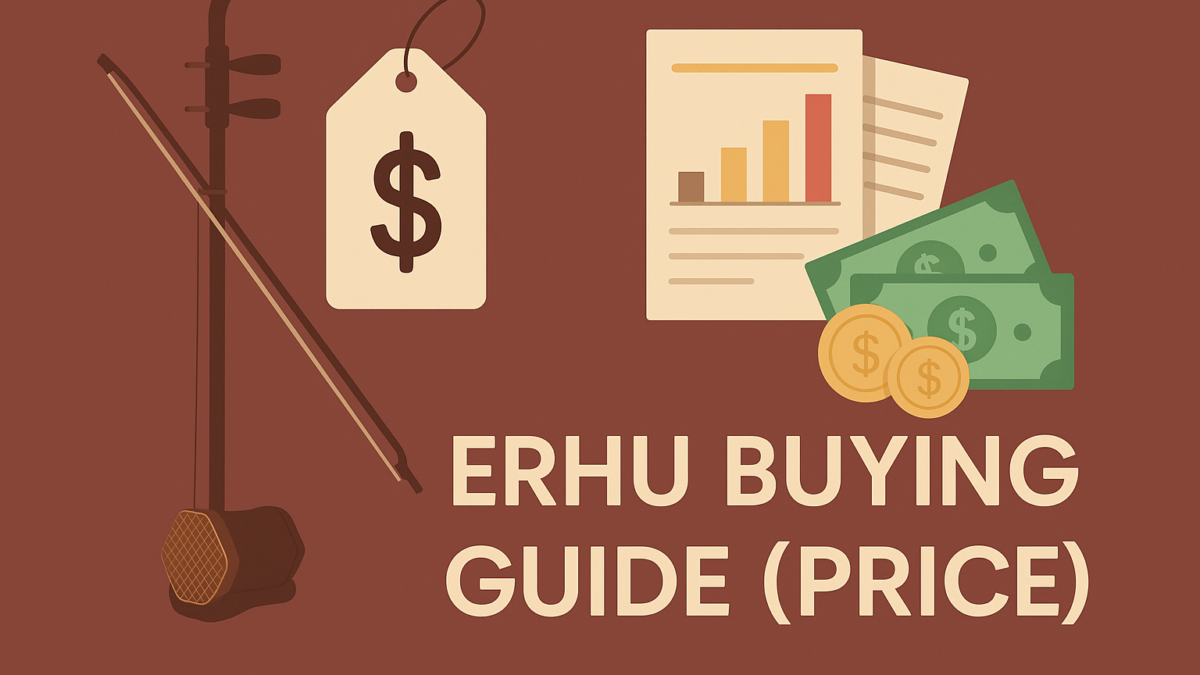
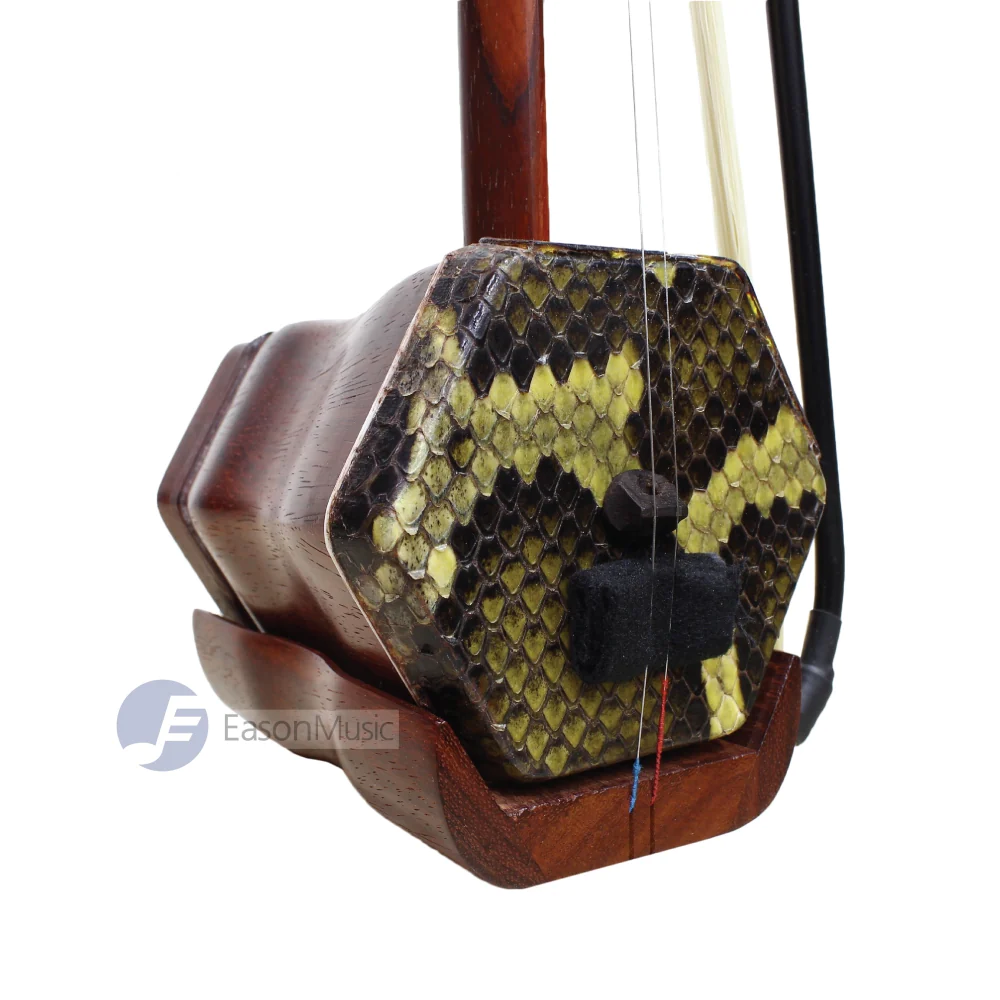
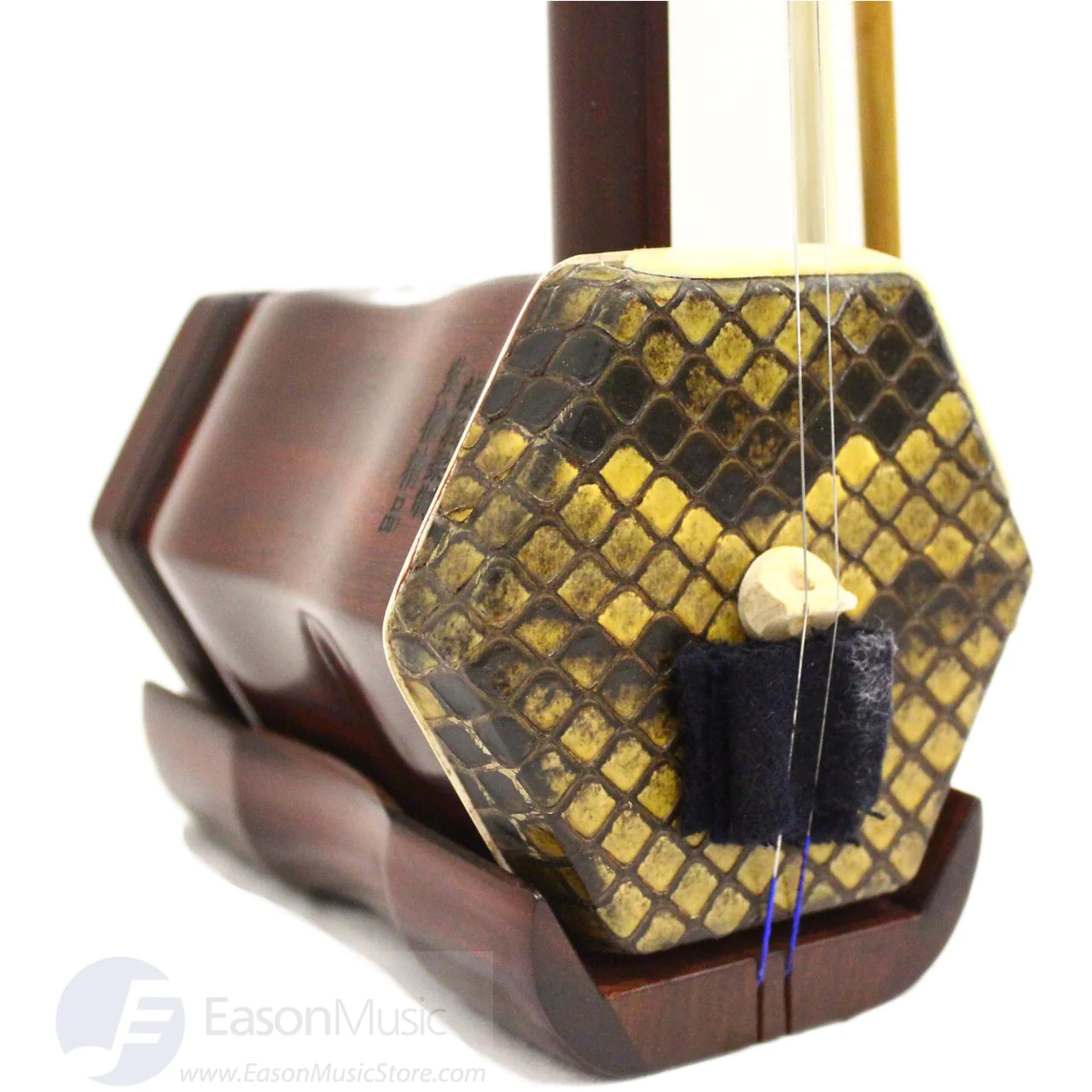













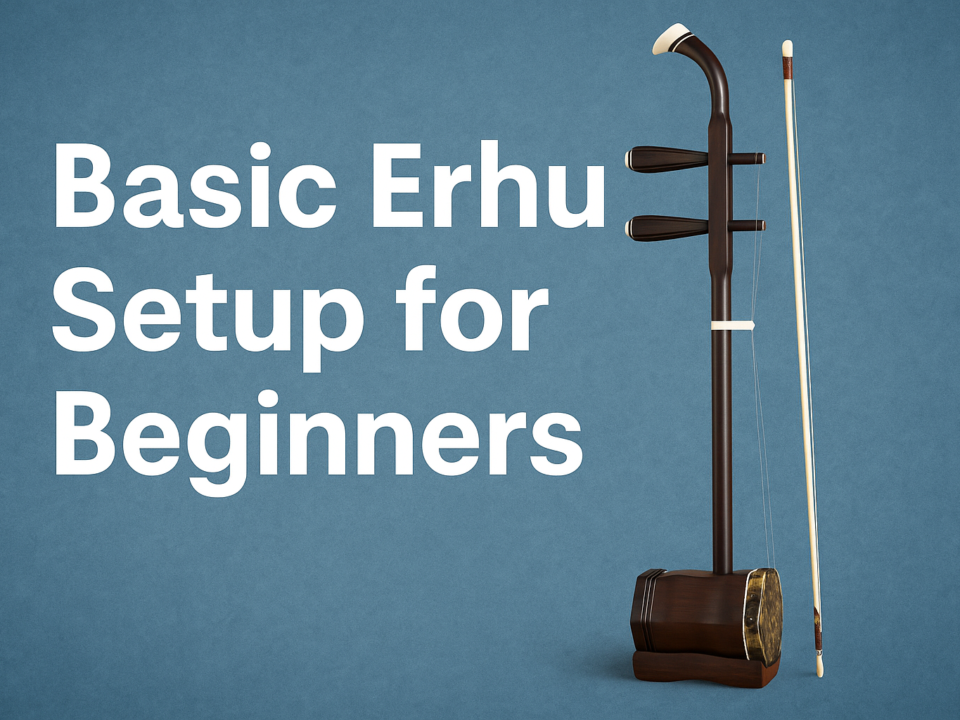
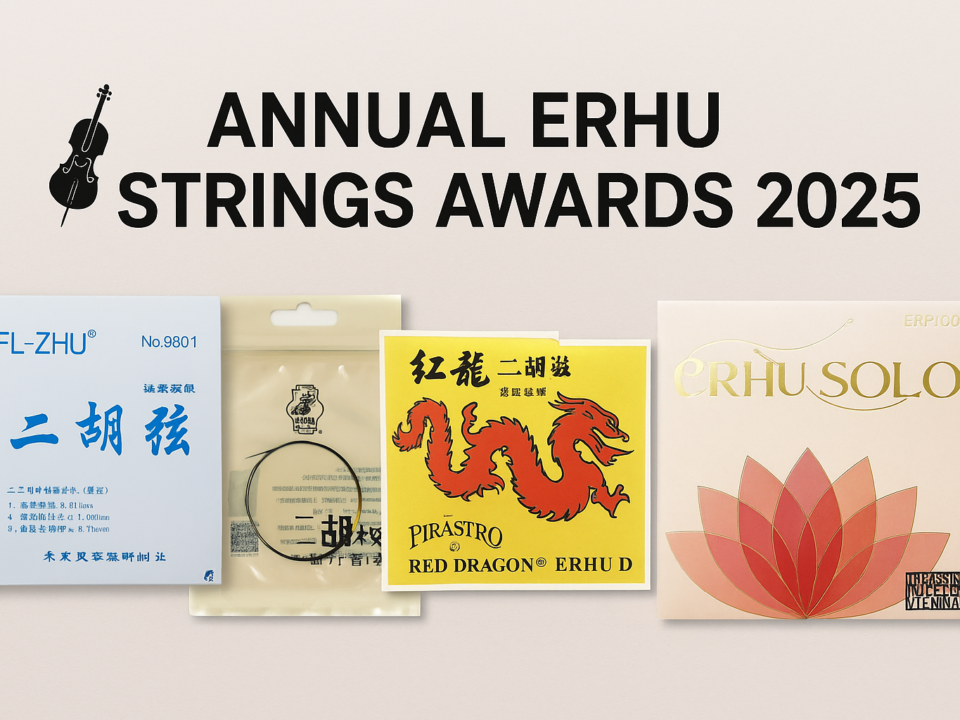
1 Comment
Hi, I just bought a Erhu (very old ) with a bow and a what looks like a pick all blacjk with a raw hide cover rhe round part. . Good condition . What else do I need to look for? Thank you for your time. Bea Forsythe 719-630-8087